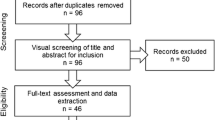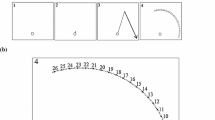Abstract
Studies have shown that the cerebellar vermis is involved in the perception of motion. However, it is unclear how the cerebellum influences motion perception. tDCS is a non-invasive brain stimulation technique that can reduce (through cathodal stimulation) or increase neuronal excitability (through anodal stimulation). To explore the nature of the cerebellar involvement on large-field global motion perception (i.e., optic flow-like motion), we applied tDCS on the cerebellar midline while participants performed an optic flow motion discrimination task. Our results show that anodal tDCS improves discrimination threshold for optic flow perception, but only for left-right motion in contrast to up-down motion discrimination. This result was evident within the first 10 min of stimulation and was also found post-stimulation. Cathodal stimulation did not have any significant effects on performance in any direction. The results show that discrimination of optic flow can be improved with tDCS of the cerebellar midline and provide further support for the role of the human midline cerebellum in the perception of optic flow.




Similar content being viewed by others
References
Baumann O, Borra RJ, Bower JM, Cullen KE, Habas C, Ivry RB, et al. Consensus paper: the role of the cerebellum in perceptual processes. Cerebellum. 2015;14:197–220.
Schmahmann JD, Guell X, Stoodley CJ, Halko MA. The theory and neuroscience of cerebellar cognition. Annu Rev Neurosci. 2019;42:337–64.
Nawrot M, Rizzo M. Motion perception deficits from midline cerebellar lesions in human. Vis Res. 1995;35:723–31.
Nawrot M, Rizzo M. Chronic motion perception deficits from midline cerebellar lesions in human. Vis Res. 1998;38:2219–24.
Thier P, Haarmeier T, Treue S, Barash S. Absence of a common functional denominator of visual disturbances in cerebellar disease. Brain. 1999;122:2133–46.
Zihl J, Von Cramon D, Mai N. Selective disturbance of movement vision after bilateral brain damage. Brain. 1983;106:313–40.
Zeki S. Area V5-a microcosm of the visual brain. Front Integr Neurosci. 2015;9:21.
Cattaneo Z, Renzi C, Casali S, Silvanto J, Vecchi T, Papagno C, et al. Cerebellar vermis plays a causal role in visual motion discrimination. Cortex. 2014;58:272–80.
Ungerleider LG, Desimone R, Galkin TW, Mishkin M. Subcortical projections of area MT in the macaque. J Comp Neurol. 1984;223:368–86.
Glickstein M, Gerrits N, Kralj-Hans I, Mercier B, Stein J, Voogd J. Visual pontocerebellar projections in the macaque. J Comp Neurol. 1994;349:51–72.
Suzuki DA, May JG, Keller EL, Yee RD. Visual motion response properties of neurons in dorsolateral pontine nucleus of alert monkey. J Neurophysiol. 1990;63:37–59.
Britten K, Shadlen M, Newsome W, Movshon J. The analysis of visual motion: a comparison of neuronal and psychophysical performance. J Neurosci. 1992;12:4745–65.
Newsome W, Pare E. A selective impairment of motion perception following lesions of the middle temporal visual area (MT). J Neurosci. 1988;8:2201–11.
Uesaki M, Ashida H. Optic-flow selective cortical sensory regions associated with self-reported states of vection. Front Psychol. 2015;6:1–9.
Antal A, Nitsche MA, Kruse W, Kincses TZ, Hoffmann K-P, Paulus W. Direct current stimulation over V5 enhances visuomotor coordination by improving motion perception in humans. J Cogn Neurosci. 2004;16:521–7.
Simpson JI. The accessory optic system. Annu Rev Neurosci. 1984;7:13–41.
Gibson JJ. The visual perception of objective motion and subjective movement. Psychol Rev. 1954;61:304–14.
van Dun K, Bodranghien F, Manto M, Mariën P. Targeting the cerebellum by noninvasive neurostimulation: a review. Cerebellum. 2017;16:695–741.
van Dun K, Bodranghien FCAA, Mariën P, Manto MU. tDCS of the cerebellum: where do we stand in 2016? Technical issues and critical review of the literature. Front Hum Neurosci. 2016;10:199.
Creutzfeldt OD, Fromm GH, Kapp H. Influence of transcortical dc currents on cortical neuronal activity. Exp Neurol. 1962;5:436–52.
Purpura DP, McMurtry JG. Intracellular activities and evoked potential changes during polarization of motor cortex. J Neurophysiol. 1965;28:166–85.
Brainard DH. The psychophysics toolbox. Spat Vis. 1997;10:433–6.
Pelli DG. The VideoToolbox software for visual psychophysics: transforming numbers into movies. Spat Vis. 1997;10:437–42.
Scase MO, Braddick OJ, Raymond JE. What is noise for the motion system? Vis Res. 1996;36:2579–86.
Nankoo J-F, Madan CR, Spetch ML, Wylie DR. Sensitivity of the avian motion system to light and dark stimuli. Exp Brain Res. 2017;235:401–6.
Pope PA. Modulating cognition using transcranial direct current stimulation of the cerebellum. J Vis Exp. 2015;52302.
Nitsche MA, Cohen LG, Wassermann EM, Priori A, Lang N, Antal A, et al. Transcranial direct current stimulation: state of the art 2008. Brain Stimulat. 2008;1:206–23.
Nitsche MA, Liebetanz D, Antal A, Lang N, Tergau F, Paulus W. Chapter 27 Modulation of cortical excitability by weak direct current stimulation—technical, safety and functional aspects. Suppl Clin Neurophysiol. 2003;56:255–76.
Thielscher A, Antunes A, Saturnino GB. Field modeling for transcranial magnetic stimulation: a useful tool to understand the physiological effects of TMS? In: 2015 37th annual international conference of the IEEE engineering in medicine and biology society (EMBC), vol. 25; 2015. p. 222–5.
Watson AB, Pelli DG. Quest: a Bayesian adaptive psychometric method. Percept Psychophys. 1983;33:113–20.
Weibull W. A statistical distribution function of wide applicability. J Appl Mech. 1951;18:293–7.
Holm S. A simple sequentially rejective multiple test procedure. Scand J Stat. 1979;6:65–70.
Miterko LN, Baker KB, Beckinghausen J, Bradnam LV, Cheng MY, Cooperrider J, et al. Consensus paper: experimental neurostimulation of the cerebellum. Cerebellum. 2019;18:1064–97.
Putcha D, Ross RS, Rosen ML, Norton DJ, Cronin-Golomb A, Somers DC, et al. Functional correlates of optic flow motion processing in Parkinson’s disease. Front Integr Neurosci. 2014;8:57.
Kang HK, Kim Y, Chung Y, Hwang S. Effects of treadmill training with optic flow on balance and gait in individuals following stroke: randomized controlled trials. Clin Rehabil. 2012;26:246–55.
Gomez-Tames J, Asai A, Mikkonen M, Laakso I, Tanaka S, Uehara S, et al. Group-level and functional-region analysis of electric-field shape during cerebellar transcranial direct current stimulation with different electrode montages. J Neural Eng. 2019;16:036001.
Baumann O, Mattingley JB. Scaling of neural responses to visual and auditory motion in the human cerebellum. J Neurosci. 2010;30:4489–95.
Baumann O, Mattingley JB. Effects of attention and perceptual uncertainty on cerebellar activity during visual motion perception. Cerebellum. 2014;13:46–54.
Yakusheva TA, Blazquez PM, Chen A, Angelaki DE. Spatiotemporal properties of optic flow and vestibular tuning in the cerebellar nodulus and uvula. J Neurosci. 2013;33:15145–60.
Wylie DR. Processing of visual signals related to self-motion in the cerebellum of pigeons. Front Behav Neurosci. 2013;12:7 4.
Haines DE, Sowa TE. Evidence of a direct projection from the medial terminal nucleus of the accessory optic system to lobule IX of the cerebellar cortex in the tree shrew (Tupaia glis). Neurosci Lett. 1985;55:125–30.
Simpson JI, Soodak RE, Hess R. The accessory optic system and its relation to the vestibulocerebellum. Prog Brain Res. 1979;50:715–24.
Burns S, Wallman J. Relation of single unit properties to the oculomotor function of the nucleus of the basal optic root (accessory optic system) in chickens. Exp Brain Res. 1981;42:171–80.
Winterson BJ, Brauth SE. Direction-selective single units in the nucleus lentiformis mesencephali of the pigeon (Columba livia). Exp Brain Res. 1985;60:215–26.
Hoffmann KP, Distler C. Quantitative analysis of visual receptive fields of neurons in nucleus of the optic tract and dorsal terminal nucleus of the accessory optic tract in macaque monkey. J Neurophysiol. 1989;62:416–28.
Kleinschmidt A, Thilo KV, Büchel C, Gresty MA, Bronstein AM, Frackowiak RS. Neural correlates of visual-motion perception as object-or self-motion. Neuroimage. 2002;16:873–82.
Nitsche MA, Kuo MF, Paulus W, Antal A. Transcranial direct current stimulation: protocols and physiological mechanisms of action. In: Textbook of neuromodulation. New York, NY: Springer; 2015. p. 101–11.
Snowden RJ, Treue S, Andersen RA. The response of neurons in areas V1 and MT of the alert rhesus monkey to moving random dot patterns. Exp Brain Res. 1992;88:389–400.
Beckers G, Zeki S. The consequences of inactivating areas V1 and V5 on visual motion perception. Brain. 1995;118:49–60.
Duffy CJ, Wurtz RH. Sensitivity of MST neurons to optic flow stimuli. I. A continuum of response selectivity to large-field stimuli. J Neurophysiol. 1991;65:1329–45.
Morrone MC, Tosetti M, Montanaro D, Fiorentini A, Cioni GI, Burr DC. A cortical area that responds specifically to optic flow, revealed by fMRI. Nat Neurosci. 2000;3:1322–8.
Apps R, Hawkes R, Aoki S, Bengtsson F, Brown AM, Chen G, et al. Cerebellar modules and their role as operational cerebellar processing units. Cerebellum. 2018;17:654–82.
Graf W, Simpson JI, Leonard CS. Spatial organization of visual messages of the rabbit’s cerebellar flocculus. II. Complex and simple spike responses of Purkinje cells. J Neurophysiol. 1988;60:2091–121.
Wylie DR, Frost BJ. Responses of pigeon vestibulocerebellar neurons to optokinetic stimulation. II. The 3-dimensional reference frame of rotation neurons in the flocculus. J Neurophysiol. 1993;70:2647–59.
Batsikadze G, Rezaee Z, Chang D-I, Gerwig M, Herlitze S, Dutta A, et al. Effects of cerebellar transcranial direct current stimulation on cerebellar-brain inhibition in humans: a systematic evaluation. Brain Stimul. 2019;12:1177–86.
Oldrati V, Schutter DJLG. Targeting the human cerebellum with transcranial direct current stimulation to modulate behavior: a meta-analysis. Cerebellum. 2018;17:228–36.
Kabakov AY, Muller PA, Pascual-Leone A, Jensen FE, Rotenberg A. Contribution of axonal orientation to pathway-dependent modulation of excitatory transmission by direct current stimulation in isolated rat hippocampus. J Neurophysiol. 2012;107:1881–9.
Rahman A, Reato D, Arlotti M, Gasca F, Datta A, Parra LC, et al. Cellular effects of acute direct current stimulation: somatic and synaptic terminal effects: Somatic and terminal origin of DCS effects. J Physiol. 2013;591:2563–78.
França C, de Andrade DC, Teixeira MJ, Galhardoni R, Silva V, Barbosa ER, et al. Effects of cerebellar neuromodulation in movement disorders: a systematic review. Brain Stimulat. 2018;11:249–60.
Acknowledgements
We would like to thank Anton Fomenko for his help with the simulation of the efield distribution.
Funding
This project was supported through a MacEwan University Arts & Sciences Research Project Grant awarded to J.-F.N, and a Natural Sciences and Engineering Council of Canada (NSERC) Discovery Grant awarded to C.S.
Author information
Authors and Affiliations
Corresponding author
Ethics declarations
Conflict of Interest
The authors have no conflict of interest to declare.
Additional information
Publisher’s Note
Springer Nature remains neutral with regard to jurisdictional claims in published maps and institutional affiliations.
Supplementary Information
ESM 1
(DOCX 23 kb)
Rights and permissions
About this article
Cite this article
Nankoo, JF., Madan, C.R., Medina, O. et al. Cerebellar tDCS Alters the Perception of Optic Flow. Cerebellum 20, 606–613 (2021). https://doi.org/10.1007/s12311-021-01245-8
Accepted:
Published:
Issue Date:
DOI: https://doi.org/10.1007/s12311-021-01245-8




